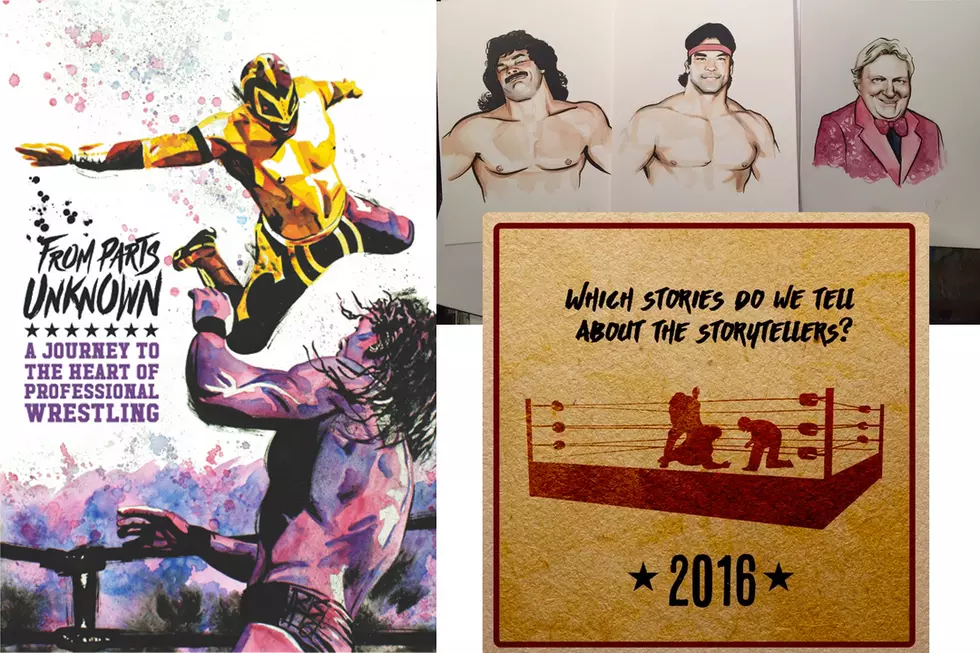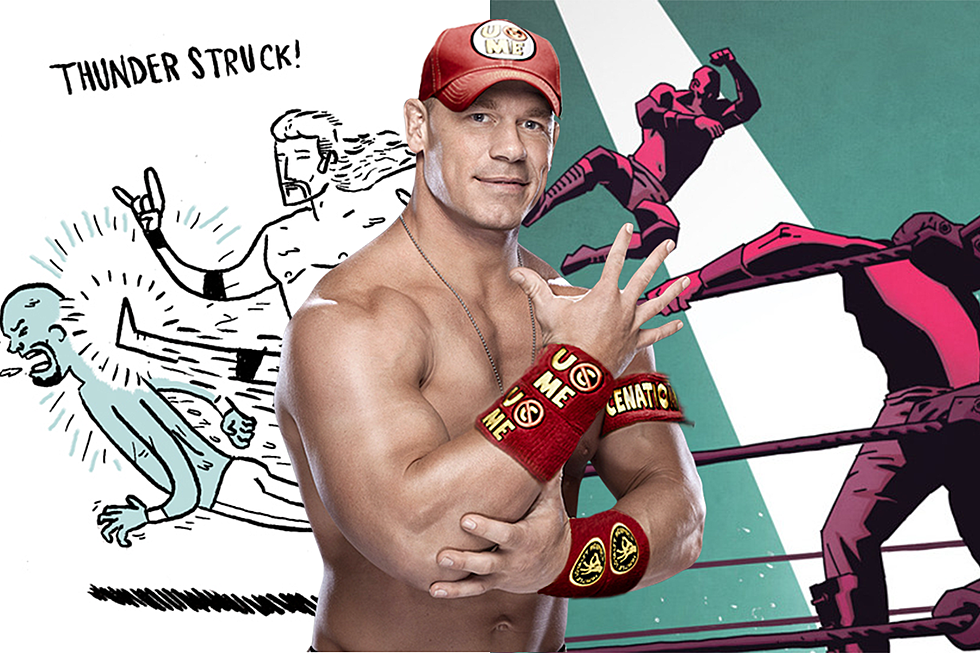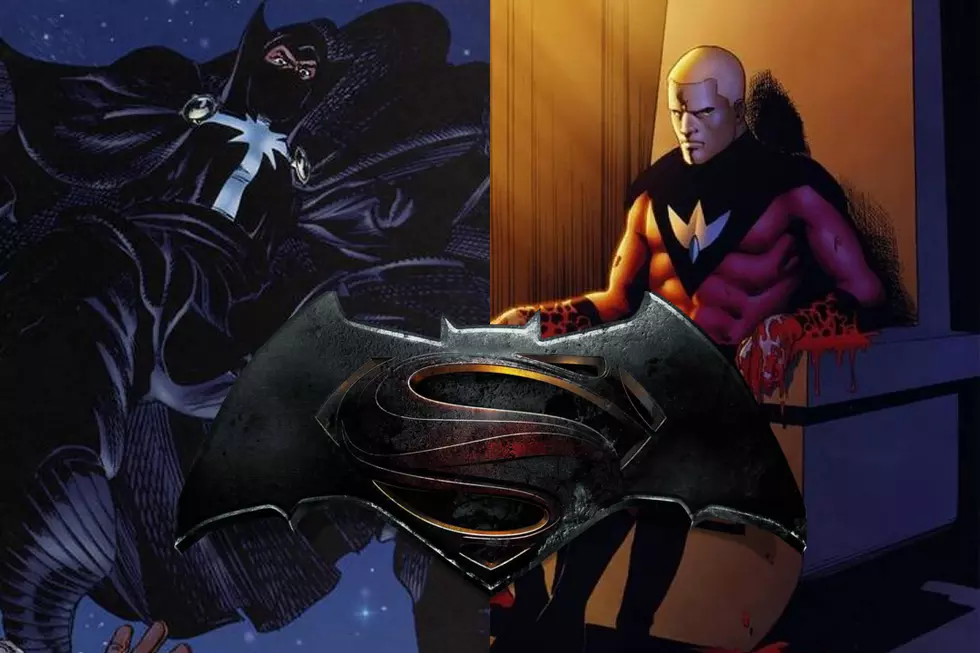![Joe Keatinge And Nick Barber On The Behind-The-Scenes Drama Of ‘Ringside’ [Interview]](http://townsquare.media/site/622/files/2016/06/Ringside-01.png?w=630&h=968&zc=1&s=0&a=t&q=89&w=980&q=75)
Joe Keatinge And Nick Barber On The Behind-The-Scenes Drama Of ‘Ringside’ [Interview]
Professional wrestling has a lot in common with comic books. Up front, both feature spandex-clad larger-than-life heroes fighting despicable baddies, sometimes for an ultimate prize that declares them the most powerful. Behind the scenes, both businesses have a tendency to chew people up and spit them out, without much care for what they become.
Image Comics's Ringside follows the darker side of professional wrestling, and ComicsAlliance chatted to writer Joe Keatinge and artist Nick Barber about Ringside's universal themes of unrelenting passion, their exploration of the underbelly of professional wrestling, and the series' focus on LGBT characters.
ComicsAlliance: Is it fair to say that Ringside is more of a comic about wrestlers than it is a comic about wrestling?
Joe Keatinge: I’d go even further and say it’s less so about wrestlers or wrestling in specific and more about anyone who relentlessly pursues what matters most to them, no matter what the cost. We set this in the world of wrestling for a number of reasons, most of all being it’s populated by women and men who embody this in a physical form more so than almost any other profession. They put their bodies and lives on the line day in and day out. It may be predetermined, but it’s not “fake.”
People have lost ears, broken legs and spines. People who have pursued this their whole lives are told at very early ages --- some in the 20s and 30s --- that the thing they’ve longed for since they were children will forever be denied to them, because their pursuit has pushed them to the point they’ll die in the process, should they keep on pushing.
CA: The wrestling almost always takes place just out of focus, in the background of a scene. Was this the plan from the beginning?
Nick Barber: There’s that idea that what you don’t show is just as important as what you do, and that’s very important in Ringside. When we see wrestling it can be out of focus, or it can be a big dramatic moment --- outside the ring, the violence is portrayed in the same way. Essentially it’s not a book that focuses on wrestling matches as such; that was always the intention from day one.
JK: There are plenty of contemporary comics out there which focus on what’s going in the ring --- Headlocked, Super Pro KO, The Legend of Ricky Thunder, to name a few --- and do it well. I feel if you’re going to write on a subject which is already being written on, you’ve got to do it in a way which is wholly yours. Otherwise, what are you doing? And again, my personal focus isn’t so much the spectacle of wrestling, but how the spectacle has very real, detrimental effects on people --- whether it’s physical, emotional, economic, etc. Ringside’s more focused on the effect than the action.
CA: What kind of research went into crafting Ringside? I imagine there were a good chunk of autobiographies on rotation at some point, but did you have a chance to talk to anyone in the business?
JK: Oh, sure, especially as we get into the second arc, which puts more of a focus on the independent scene. The people giving their all in an Eagles Lodge like it was Madison Square Garden. Mick Foley’s [autobiography] Have A Nice Day was instrumental on me ever since it was initially released --- it was my first real direct interaction with the flip side of wrestling, how great the toll of the pursuit can be.
NB: For me, I think I got the most out of watching a lot of the behind-the-scenes documentaries about wrestlers --- a lot of the visuals in the book would come from watching those I’d say.
CA: A lot of people might not know that Ringside has about as many LGBT characters as it does straight, and wrestling in real life has a complicated and often disappointing history with that subject matter. Was this something you took into consideration when creating the book?
JK: Yeah, absolutely. I’m also tired of LGBT characters portrayed in a positive way --- or even being represented at all --- being some sort of anomaly in comics. It should be the base standard. So a part of it was to discuss what you bring up --- the rough history of wrestling with homosexuality --- but also to represent gay characters through Daniel Knossos and Reynolds in ways which aren’t tokenism, but rather the character being the character being the character, and it being an inherent part of who they are. Just like real human beings.
CA: Wrestling is a very visual medium, and the characters in Ringside all have very distinct designs, whether it’s in or out of spandex. How does your collaboration process work when it comes to designing characters?
NB: Usually from reading the script I will have a pretty clear idea in my head about how a character should look. I won’t sit down and do various designs --- instead I’ll just start drawing the characters roughly during the layout phase. After laying out so many pages, the characters will be pretty fleshed out. I’ll tweak things here and there, but it’s pretty organic. I’d rather draw the story than sit down and design stuff out of context.
CA: When it comes to staging fights, is that something that’s mapped out in the scripts or is something that Nick works out on the page?
NB: The beats are mapped out in the script. I’ll stage stuff the best way I can to tell the story, that’s the way every scene works, whether it’s a fight or a conversation in a diner. Joe’s scripts are really good at just focusing on what’s important in a scene and not getting bogged down in art direction / camera direction.
CA: There are plenty of well-known comic fans in the wrestling world. Have you heard any feedback from wrestlers about Ringside since it debuted?
NB: They seem to like it. It’s just as important that a non-wrestling fan enjoys the book too though, it’s not a fanzine, it’s a fictional drama, so even if you know nothing about wrestling, it won’t effect your enjoyment of the book. We’ve had a great response from people who aren’t hardcore fans, and some that are new to comics --- which is amazing.
CA: Has the series found a foothold among people who aren’t die hard wrestling fans?
JK: Yeah, absolutely. I’ve heard from a number of people who aren’t into wrestling at all, yet love the book. It doesn’t matter what you’re into --- most everyone has a pursuit, a passion, something or someone they’re willing to go all the way for. It’s universal, whether you tune into RAW every week or not.
NB: Ringside is my first comic, so I was a little anxious to see if people were into the slightly different art style I chose for the book. The response has been great though, and people seem to really like the storytelling and acting --- which has always been my main focus.
CA: Ringside returns in July; what can we expect from the next arc and the series going forward?
NB: I don’t want to give anything away, but it’s going to be a hell of a ride. Ringside Volume 1 comes out in trade June 21st --- so that’s a great chance to get caught up before Volume 2 launches in July!
JK: The first volume is called "Kayfabe," and dealt, in part, with the different realities we build around ourselves. The second is called "Work," which goes into the wrestling terminology meaning anything which is planned to happen, “working a crowd,” in addition to the general idea of “doing the work,” no matter what it takes. The third is called “Shoot,” which relates to the idea of when a wrestler goes off-script and breaks the reality of “Kayfabe” --- when the realities built up in the first volume are torn down, and who you are when everything you’ve loved is lost. It’s a rough ride for Daniel Knossos and company.
Ringside Vol 1: Kayfabe is out available in stores and digitally on July 15.
More From ComicsAlliance
![All The Image Comics Announcements From Emerald City Comic Con [ECCC ’17]](http://townsquare.media/site/622/files/2017/03/Image-Featured.png?w=980&q=75)
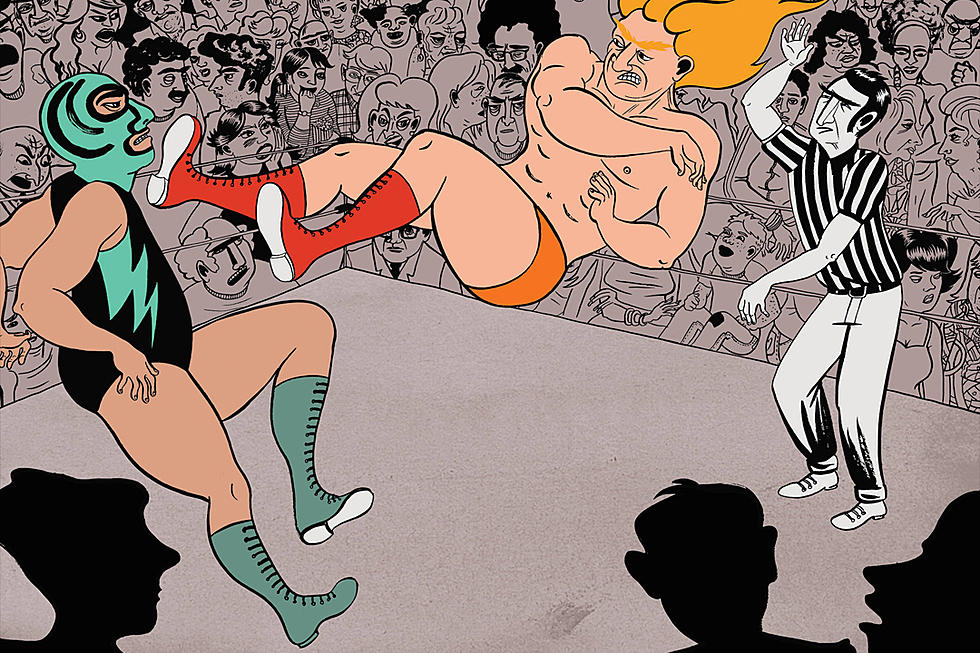

![The Issue: Double Exposure In ‘Shutter’ #23 [Fantasy Week]](http://townsquare.media/site/622/files/2016/10/TheIssue-Shutter.jpg?w=980&q=75)
